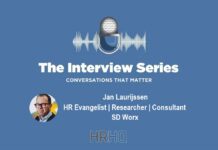by Barry Reynolds, Partner, Littler Ireland
AI is leading to redundancies in the EU, but to what extent? While the rapid evolution of AI is undeniable, there are manifold views on the nature and extent of its impact on the modern workplace. Littler’s upcoming 2025 European Executive Employer Conference will discuss trends, experiences, and issues arising in workforce reductions, as well as ways to avoid them, with a focus on AI’s role in the process.
Workforce reductions typically arise from employers’ reducing their costs, harnessing efficiencies, or deploying technologies in new or different ways. AI brings profound improvements to processes as well as many other capabilities, and AI applications can reduce or remove the need for certain roles. They also lead to a need for different kinds of roles. This evolution (or revolution?) is of course already happening and role eliminations and alterations resulting from AI are attracting a lot of attention. While forecasts vary, a huge percentage of global employment is expected to be affected in one way or another by AI in the near term.
A further development is how employers are utilising AI in managing the various key steps to be taken in any redundancy programme. We are already seeing a change. In a headcount reduction exercise AI can be used in a number of ways including in selecting employees from a team, department or business unit. However, this is seen as a high-risk deployment of AI and must be closely managed and curated so as to be defensible under imminent legislation governing the use of AI as well as to meet the existing requirements of having fair and reasonable processes leading to termination of employment. That said, some regions are anticipated to be less regulated than others.
The concerns can also be reversed, however. AI can in some situations help to show fairness. Importantly, AI’s application to redundancy processes – albeit with human oversight – could also help to show that individuals have not been unfairly singled out, a common allegation by individuals impacted by redundancy processes.
Crucially, employees too have access to AI in their engagement with employers. This is already having a huge impact on redundancy consultation as well as negotiations with employees in the aftermath of redundancies.
Ultimately, AI brings both risk and opportunities in the employment space with redundancies potentially becoming an incubator in which AI converges on legal rights and obligations. It may even accelerate necessary changes in the laws governing RiFs and further regulation. The employer and the employee have powerful resources at their disposal.
About the author
Barry Reynolds is a Partner with Littler Ireland and has been advising on Irish employment for more than 20 years. He advises both global and local clients across various sectors and has significant inhouse experience in the financial services sector. Barry has extensive experience of advising Boards and partnering with senior management, including to resolve sensitive and urgent disputes, advise strategically on internal processes and on the employment aspects of transactions. He has practiced in two of Ireland’s largest commercial firms, and most recently led the Dublin employment team of an international firm. Barry is recognised in the Legal 500 EMEA guide and is acknowledged as a leading lawyer in the Ireland employment law arena by Chambers Europe 2023.











































